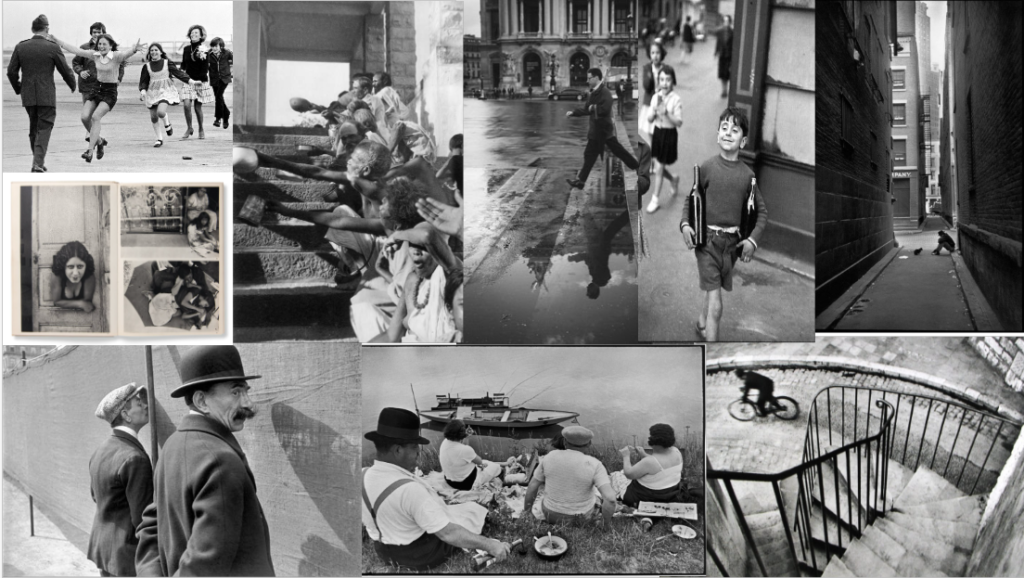BIOGRAPHY
Henry Cartier-Bresson who was born in August 22, 1908, Chanteloup, France who then died on the 3rd of August 2004, was a phenomenal photographer whose photographs helped show Photojournalism as an art form. He expresses his theory towards photography, where it implies that photography can capture the meaning beneath outward appearance in instants of extraordinary clarity, in his book of images à la sauvette
He attended school in a village not far from Paris and in 1927 until 1928 he studied in Paris with Andre Lhote, an artist associated with the cubist movement. With Lhote’s help, her placed Henry a lifelong interest in painting which was a crucial factor in the education of his vision. Then in 1929, he went to study literature and painting in the University of Cambridge.
Some of Cartiers images had been exhibited in 1933 in the Julien Levy, Gallery in New York City. In the same year, in partnership with the U.S photographer Robert Capa and others, founded the cooperative photo agency called Magnum photos. This amazing organisation gifted periodicals global coverage by some of the most talented photojournalists of the time. This is where Cartiers concentration towards reportage photography became at its finest. The following three years, he was found in, India, Indonesia, Egypt and China. The materials taken in this time and in 1950s Europe, allowed him to create subjects to his many books which were published between 1952 and 1956. These publications majorly helped his reputation as a master of his craft.
In mention of his crafts which is best known as, Images à la sauvette, consists of an important statement with great meaning, utility of photography and technique.
“I prowled the streets all day, feeling very strung-up and ready to pounce, determined to ‘trap’ life – to preserve life in the act of living. Above all, I craved to seize the whole essence, in the confines of one single photograph, of some situation that was in the process of unrolling itself before my eyes.”
THE DECISIVE MOMENT
The decisive moment is described as something that explain Cartier-Bresson’s influential publication. This concept is said to be internationally one of the most critical photobooks in the Twentieth century.
Robert Capa, described it as “a bible for photographers”
Originally titled as “images a la sauvette” which means images on the run in French. The book was published in English with a new title the decisive moment. It is Frequently described as “capturing an event that is ephemeral and spontaneous, where the image represents the essence of the event itself”. However, it is the complete opposite because it is about taking pictures in a dynamic and moving world.
“Your eye must see a composition or an expression that life itself offers you, and you must know with intuition when to click the camera.” – Henri Cartier-Bresson
MOOD BOARD:

Why is a camera an extension of the eye?
it is believed that the camera is an extension of the eye because it shows what one sees and is able to capture what one sees. Its also an extension because it can capture something that is not seen up close by the human eye but is captured by the camera.
What is the physical pleasure in making photographs?
The pleasure of being able to create an image that has simplicity or depth. The pleasure of producing images and capturing a moment to remember and romanticise. The whole process of producing an image is rewarding and quite fulfilling.
How can photography be links to hunting?
In photography, some hunt for a certain subject or a certain scenario or person. Like hunting, where they wait for the prey to come in sight, its like taking pictures. You wait until you capture the perfect subject, scenario, environment etc. Photographers are hunting for the ultimate picture. Its a decisive moment.
Please note that AI may have been used to construct this blog
